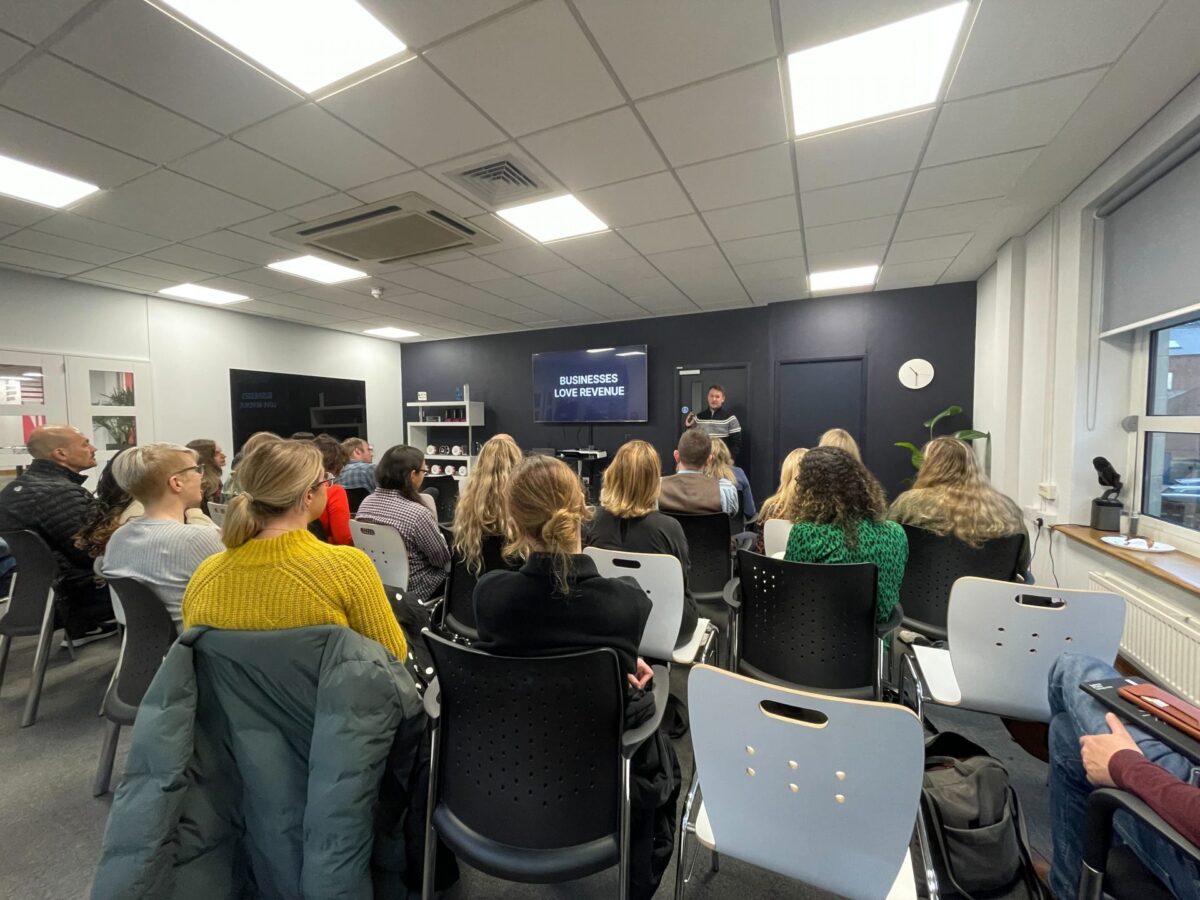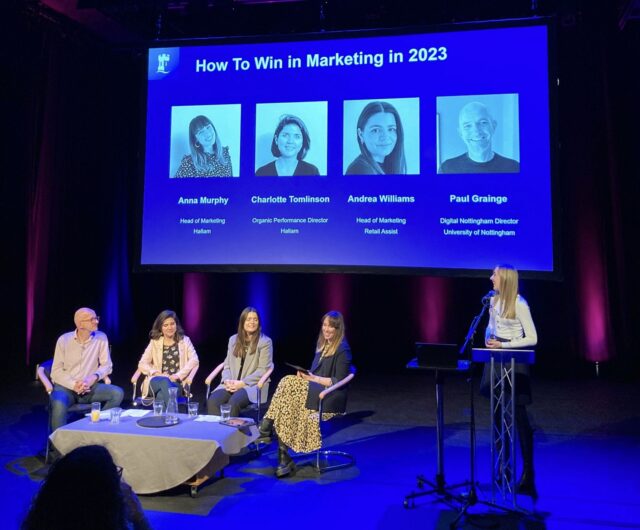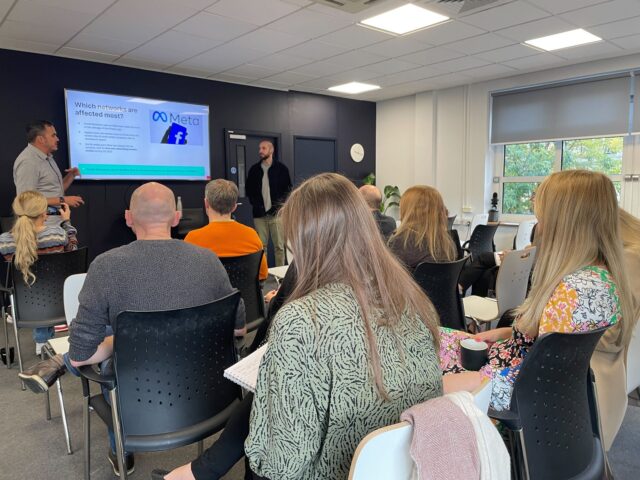Paid Media is all about targeting the right people in the right place at the right time. From a marketing perspective, that can be as simple as choosing the right audiences, where to show your ads and what type of ads to show them.
But, with the rise of automation and tightening privacy restrictions, it’s no longer that simple.
What’s the problem?
Around 18 months ago, Apple tried to make us all unemployed with the release of iOS 14.5; with one tiny change the implementation of the “opt-in” choice paid advertising was turned upside down.
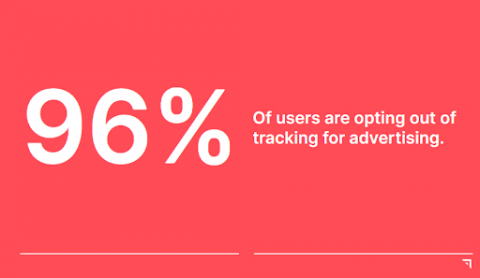
This, combined with the rise of automation, means that more and more we’re handing tasks over to the robots and hoping they deliver the results we need – with the only control we can really pull on being a target CPA or ROAS.
As it stands right now, it’s incredibly common for a standard reporting call on performance to be focused on the current CPA and how we’ve reduced it month on month – but this doesn’t address the bigger goals of a business and can actually do more damage than good.
If we focus hard on reducing a CPA, or increasing the volume of top level form fills, we miss out on the actual business impact further down the funnel. How many of the forms filled in actually turned into SQL’s or customers? What’s the value of that customer? Why are we trying to reduce the CPA below £2k if a contract is worth £500k on average?
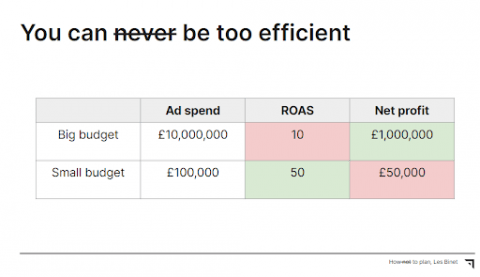 The big takeaway here is one thing; CPA & ROAS in isolation are vanity metrics – they don’t tell the full story, and by over focusing on efficiency we lose sight of the effectiveness of our activity.
The big takeaway here is one thing; CPA & ROAS in isolation are vanity metrics – they don’t tell the full story, and by over focusing on efficiency we lose sight of the effectiveness of our activity.
What should you do instead?
The solution to this problem is moving from optimising against efficiency metrics to look at the bigger picture – calculating, tracking and optimising based on effectiveness metrics.
Instead of judging our campaign solely on a CPA or ROAS, we should be looking at the MQL -> SQL conversion rate and number of customers generated, or profit on ad spend instead of just return.
We’re currently managing activity by handing our budget over to the robots and letting them know we need as many leads as possible, or that we need them to hit a specific CPA – and more often than not, that CPA target is just set based on a reduction we’d like to see from last month’s performance.
If we can calculate what the steps further down the funnel are worth, we can begin to open up those CPA targets and unleash the true power of smart bidding with wider ranges that will still result in actual value driven.
Unleashing robots
Smart bidding is the revolution that first changed the way we work – and initially, I’m sure we were all very sceptical about handing over that control, losing visibility on the data and needing to trust the robots to deliver the results we’d been delivering by hand for the last few years.
Nowadays – smart bidding is the best practice. It’s commonplace, everybody is using it – including your competitors. With that being said, if everybody is using the same bidding methods and targeting options, how can you actually drive better performance than them?
The real way to beat out the competition now comes in the data that you’re feeding the robots – Google’s blackbox system, while being closed off, has 7 trillion different intent signals all contributing to tell the system whether that user is ready to fill in a form on your page or not. This is a great first step, but we don’t just want forms to be filled in – we want high value customers, large businesses, users that are likely to come back again and again. Google doesn’t have this data – they don’t know what a high value customer is for your business – they don’t know your sales team’s conversion rates or your profitability on a given product.
So why not give them that data?
We need to train the algorithms to grow the business – not just drive a load of form fills that don’t convert into customers at a high enough rate. If we can calculate internal conversion rates and average contract values – we can feed the robots the right information and harness the power of smart bidding to drive high value customers to our forms.
This is the key – this is how we move away from optimising for efficiency metrics like a CPA, into optimising for metrics that will actually impact the business bottomline – efficiency metrics.
Now – as much as this sounds like great theory – it sounds like great theory. Is it even possible to implement and run activity based on deep down funnel metrics like contracts signed?
Well – we probably wouldn’t be releasing this blog if the answer was no – so, yes – it is possible. We’ve done it – for lots of clients. One great example being a client in the SaaS industry that historically managed all of their activity aiming for a £3k CPA because that’s what they’d always aimed for.
By helping them calculate the conversion rates from MQL to SQL and SQL to customer – we could see how many leads we needed to drive to actually get a customer, and by taking the average contract value we could then work backwards to see that we could actually afford to pay up to £10k for that same lead we’d originally been trying to get at £3k – that £3k target alone had severely hindered and restricted potential growth due to how tight it was. By opening up the target CPA to £10k we were able to invest more budget, expand activity in the right areas that were driving customers most often – and most importantly, drive more actual, attributable revenue in the pipeline.
Next month…
Our next Breakfast Briefing will be a UX 101 with our Head of Experience, Francis – he’ll be sharing his top tips from UX to UI and CRO to the wider customer journey. Register here.

